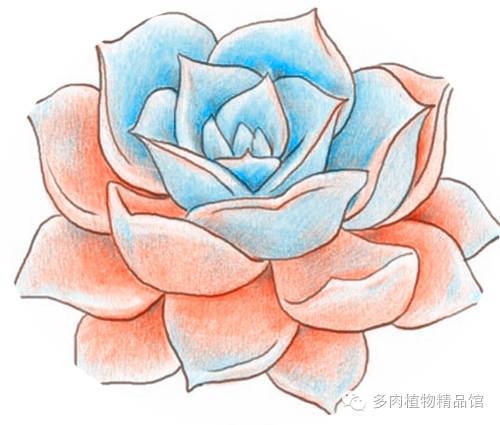The difference between slow-release fertilizer and controlled-release fertilizer

Text
Picture and text: this girl is a little sweet.
When it comes to succulent fertilizer, slow-release fertilizer is definitely one of the fertilizers that will be mentioned. Although it is customary to say that slow-release fertilizer is slow-release fertilizer, strictly speaking, slow-release fertilizer is actually controlled-release fertilizer. But in effect, both of them have the same meaning. Here are some explanations about slow-release fertilizers and controlled-release fertilizers found online.
Slow-release fertilizer and controlled-release fertilizer have slow release rate and long fertilizer effect. in this sense, there is no strict difference between slow-release fertilizer and controlled-release fertilizer. However, from the mechanism and effect of controlling nutrient release rate, there is a difference between slow-release fertilizer and controlled-release fertilizer. Slow-release fertilizer slows down the release rate of nutrients in fertilizer through chemical and biological factors, which is affected by many external factors, such as soil pH value, microbial activity, soil water content, soil type and irrigation water. On the other hand, the controlled-release fertilizer is to slowly release the nutrients by wrapping the water-soluble fertilizer in the film. When the coated fertilizer particles come into contact with the moist soil, the water in the soil infiltrates into the interior through the film, making part of the fertilizer dissolve. This part of the water-soluble nutrients slowly and continuously spread out through the micropores on the film. The higher the soil temperature is, the faster the fertilizer dissolves and passes through the membrane, and the thinner the membrane is, the faster it permeates.
Second, from the point of view of the types of nutrients, the two are also different. Most of the slow-release fertilizers are monomer fertilizers, and the main varieties are slow-acting nitrogen fertilizers, also known as long-acting nitrogen fertilizers, which have little solubility in water. After applying to the soil, under the action of chemical and biological factors, fertilizer gradually decomposes and nitrogen is released slowly to meet the demand for nitrogen in the whole growing period of crops. Most of the controlled release fertilizers are N-P-K compound fertilizer or total nutrient fertilizer with trace elements. After being applied to the soil, its release rate is only affected by soil temperature. However, soil temperature also has a great influence on plant growth rate. In a certain temperature range, the soil temperature increases, the release rate of controlled release fertilizer is accelerated, at the same time, plant growth rate is accelerated, and the demand for fertilizer is also increased.
The third is whether the release rate of nutrients is consistent with the demand for nutrients in each stage of the plant. The nutrient release rate of slow-release fertilizer is uneven, and the nutrient release rate of controlled-release fertilizer is not necessarily synchronized with the nutrient demand of crops; the nutrient release rate of controlled-release fertilizer is consistent with the rate of plant demand for nutrients, so as to meet the nutrient needs of crops at different growth stages.
But in fact, for succulent plants, it seems unscientific to determine the amount of fertilizer released according to temperature. after all, the hottest time in summer is when succulent plants are weakest. Fertilizer is not really needed (probably the most accurate way is to decide when to slow down the release of fertilizer according to the duration of fertilizer effect. For example, when the commonly used Aolu A2 fertilizer effect is from May to June, then the fertilizer is buried in January, and the end of July is perfect). It is possible that the release of fertilizer according to temperature is really not so scientific, so there is the third generation of Ordovician fine controlled fertilizer, which is characterized by balanced release throughout the release period (the same amount in different release periods), but the ratio of nitrogen, phosphorus and potassium is 15-9-11. Obviously, it's not for succulent plants.
The article is organized by the succulent plant boutique, the copyright belongs to the original author, some articles can not find out the source, marked as the source network, if there is any infringement, please contact us immediately, we will deal with it in time.
- Prev

It's easy to put on a fur coat in the morning and sand in the afternoon
1. The effect of temperature difference on succulent plants For succulent plants originating in South Africa, the most suitable temperature for most varieties to grow is between 12 and 28 degrees. This data should also be the high temperature of the growing season of origin.
- Next

Introduction to coloring methods of succulent plants
Text: the Internet is not long away from the annual succulent coloring season, and some new entrants asked me about succulent coloring a few days ago, so today I'm going to be simple and big.
Related
- Wuhan Hospital Iron Tree Blooming Result Was Instantly Frightened by the Gardener Master
- Which variety of camellia is the most fragrant and best? Which one do you like best?
- What is the small blue coat, the breeding methods and matters needing attention of the succulent plant
- Dormancy time and maintenance management of succulent plants during dormancy
- Minas succulent how to raise, Minas succulent plant pictures
- What are the varieties of winter succulent plants
- How to raise succulent plants in twelve rolls? let's take a look at some experience of breeding twelve rolls.
- Attention should be paid to water control for succulent plants during dormant period (winter and summer)
- Watering experience of twelve rolls of succulent plants
- Techniques for fertilizing succulent plants. An article will let you know how to fertilize succulent plants.

